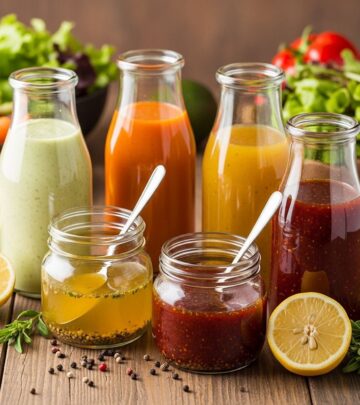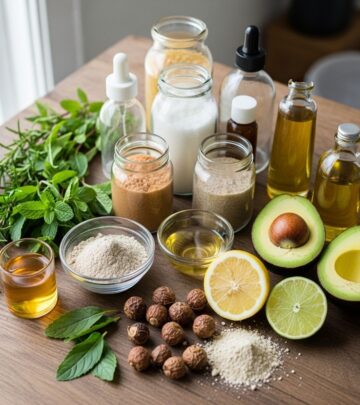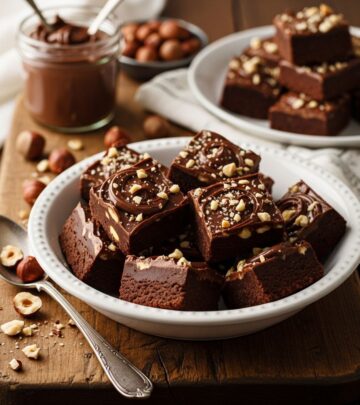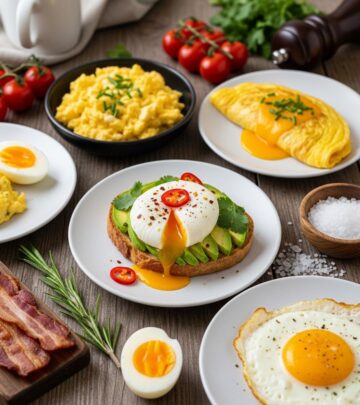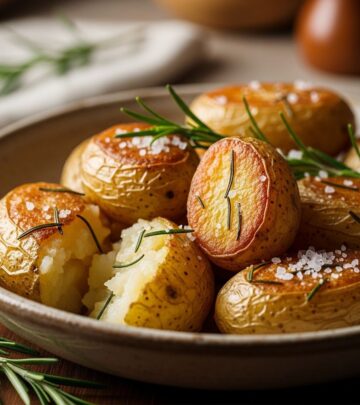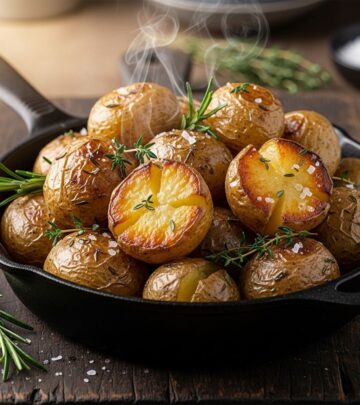Oven-Baked Cabbage Steaks: A Simple & Flavorful Vegetarian Dish
Seasoned veggie slices caramelize to perfection, revealing sweet and savory layers.
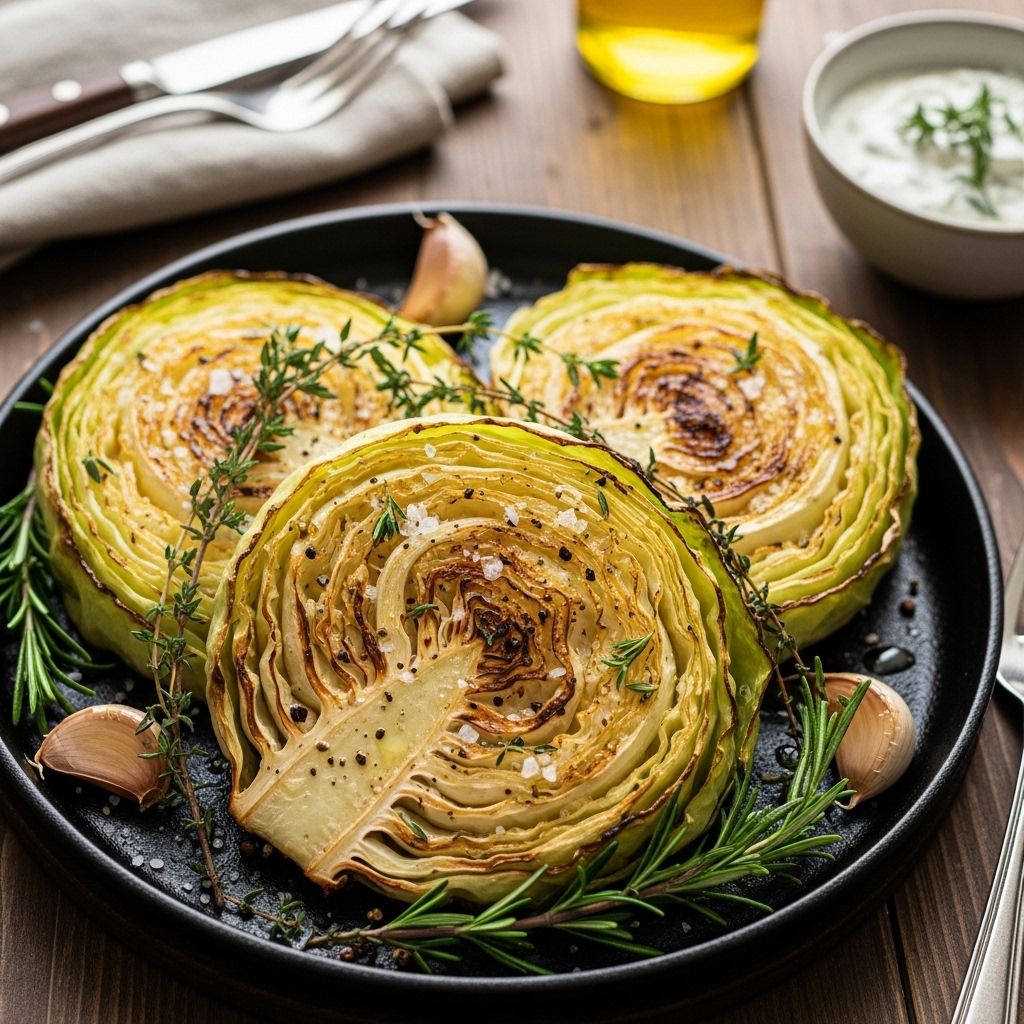
Image: HearthJunction Design Team
Cabbage Steaks: The Unlikely Star of Your Oven
Baked cabbage steaks have emerged as a surprisingly simple, yet incredibly flavorful addition to any table. With minimal preparation and a short list of ingredients, you can transform an everyday cabbage into melt-in-your-mouth slices that are either a perfect side dish or a satisfying vegetarian main. In this guide, you’ll discover everything you need to know to create irresistibly tender, oven-baked cabbage steaks, including preparation tips, nutritional benefits, variations, and expert advice for perfect results every time.
Table of Contents
- What Are Cabbage Steaks?
- Ingredients
- Step-by-Step Baking Instructions
- Expert Tips for Best Results
- Serving Ideas & Variations
- Nutritional Information
- Frequently Asked Questions
What Are Cabbage Steaks?
Cabbage steaks are thick, cross-sectional slices of cabbage that are seasoned and baked to achieve a tender, almost creamy center, contrasted by caramelized edges. This method elevates the simple cabbage to a new level, bringing out its natural sweetness and making it a satisfying base for various flavor profiles.
Unlike grilling or braising, the oven-baking method ensures a deep and even roast, creating crispy, browned edges and a soft, buttery core. Cabbage steaks are naturally gluten-free, vegan, and low-cost, making them accessible for most diets and occasions.
Ingredients
One of the main appeals of cabbage steaks is how little you need to get started—all of the ingredients are likely already in your kitchen:
- 1 head green cabbage (medium-sized provides about six steaks)
- 2 tablespoons light olive oil (extra-virgin or any preferred baking oil)
- 2 tablespoons minced garlic (adjustable for taste, or use garlic powder)
- 1/2 teaspoon salt (or to taste, prefer sea salt for added minerals)
- 1/2 teaspoon ground black pepper (freshly ground for boldness)
Optional Additions:
- Red pepper flakes (for heat and color)
- Paprika or smoked paprika (for warmth and smokiness)
- Lemon wedges (for brightness after baking)
- Fresh herbs (thyme, parsley, dill)
Step-by-Step Baking Instructions
- Preheat the oven:
Heat your oven to 350°F (175°C) to ensure a gentle, even bake. - Prepare the cabbage:
Remove any loose or damaged outer leaves of the cabbage. Cut off the stem to create a stable, flat base. Place the cabbage upright on a cutting board and slice it vertically into 1-inch thick rounds. Aim for uniform thickness so all steaks bake evenly. Handle the slices carefully to prevent them from falling apart. - Arrange on a baking sheet:
Place the cabbage steaks in a single layer on a large sheet pan or a casserole dish. If some outer pieces fall away during slicing, you can tuck them alongside the steaks for bonus crispy bits! - Season and drizzle:
Drizzle olive oil over each cabbage steak, spreading evenly. Sprinkle the minced garlic (or garlic powder) over each slice. Dust with salt and pepper. For even flavor, consider flipping the steaks and seasoning both sides. - Bake covered:
Cover the pan tightly with foil. This traps steam, helping the cabbage become tender. Place in the oven and bake for approximately 45 minutes, or until a fork easily pierces the cabbage center. For browned edges, remove the foil during the last 10 minutes of baking. - Garnish and serve:
Add freshly ground black pepper, a squeeze of lemon, or a sprinkle of chopped herbs to brighten the flavors just before serving.
Expert Tips for Perfect Cabbage Steaks
- Uniform Slicing: Consistent 1-inch thickness ensures the cabbage cooks evenly and doesn’t fall apart.
- Oven Placement: For maximum caramelization, place your baking sheet in the center or on an upper rack. For extra browning, consider a brief broil at the end.
- Oil Matters: Use enough oil to coat both sides for richness and to help the seasonings adhere. Olive oil adds a gentle flavor; avocado oil works well for higher-heat methods.
- Custom Seasonings: The basic recipe is a blank canvas—try spices like curry powder, cumin, ranch seasoning, or nutritional yeast for a different profile.
- Rest After Baking: Let the cabbage steaks rest for a couple of minutes to firm up before transferring to plates, minimizing the chances they’ll break.
Serving Ideas & Popular Variations
These simple steaks can adapt to nearly any meal, whether as a main, side, or base for toppings. Here are some ideas:
- As a side dish: Partner with roasted chicken, salmon, or baked tofu for a balanced plate.
- Vegetarian main: Add a drizzle of tahini, a scattering of toasted nuts, or a topping of chickpeas for added protein and texture.
- Flavor variations:
- Sprinkle with grated cheese (Parmesan or vegan cheese) in the last 5–10 minutes for a savory finish.
- Add smoked paprika and a spoonful of Greek yogurt for a Mediterranean twist.
- Serve with chimichurri sauce, sriracha, or a creamy mustard dressing for boldness.
- Meal prep and leftovers: Refrigerate baked cabbage steaks in an airtight container for up to 4 days. Reheat in a hot oven or skillet for best texture. Chop leftovers and add to grain bowls, soups, or pasta.
Flavoring Inspiration Table
| Flavor Profile | Suggested Toppings/Seasonings |
|---|---|
| Classic | Garlic, black pepper, olive oil, lemon |
| Spicy | Red pepper flakes, chili oil, sriracha |
| Herby | Thyme, dill, Italian seasoning, fresh parsley |
| Cheesy | Parmesan, feta, nutritional yeast |
| Asian-inspired | Sesame oil, tamari, ginger, scallions |
| Mediterranean | Paprika, lemon, Greek yogurt, olives |
Nutrition Facts
| Serving Size | 1 cabbage steak (approx. 1/6 recipe) |
|---|---|
| Calories | 92 |
| Total Fat | 5g (6% DV) |
| Saturated Fat | 1g (3% DV) |
| Cholesterol | 0mg (0% DV) |
| Sodium | 17mg (1% DV) |
| Total Carbohydrates | 13g (5% DV) |
| Dietary Fiber | 4g (14% DV) |
| Total Sugars | 6g |
| Protein | 3g (6% DV) |
| Vitamin C | 80mg (89% DV) |
| Calcium | 106mg (8% DV) |
| Iron | 0mg (2% DV) |
| Potassium | 424mg (9% DV) |
*DV = Daily Value, based on a 2,000 calorie diet.
Frequently Asked Questions (FAQs)
Q: Can I use red cabbage instead of green?
A: Absolutely! Red cabbage can be sliced and baked using the exact same method. It adds a vibrant color and a slightly earthier flavor, but expect the texture to remain similar.
Q: How can I make cabbage steaks crispier?
A: For crispier edges, increase the oven temperature to 400–425°F (200–220°C) and remove the foil during the last 15 minutes, or broil on high for 2–3 minutes at the end. Brushing a second coat of oil and seasoning mid-bake also boosts browning. Avoid overcrowding the pan so that air can circulate.
Q: Are cabbage steaks healthy?
A: Yes—cabbage is packed with Vitamin C, fiber, potassium, and antioxidants. Baking with olive oil and minimal salt preserves its nutritional qualities while adding healthy fats.
Q: Can cabbage steaks be grilled instead of baked?
A: Certainly—carefully grill them over medium-high heat for about 6–8 minutes per side. Use a grill pan or sturdy spatula to flip, and watch for charring and tenderness.
Q: What main dishes pair well with cabbage steaks?
A: Cabbage steaks are versatile—serve with roast chicken, pork chops, seitan, tofu, or beans. Try them in wraps, as a base for eggs, or topped with a hearty tomato sauce for variation.
Q: How do I store and reheat leftovers?
A: Cool completely, store in an airtight container in the refrigerator for up to 4 days. To reheat, place in a hot oven (400°F/200°C) for about 10 minutes to crisp edges again. They’re also great chopped cold into salads or reheated in a skillet.
Conclusion
Baked cabbage steaks are a healthy, easy, and delicious vegetable dish that even picky eaters can enjoy. Whether served as a side or built into a vegetarian main, their adaptability and flavor make them an instant classic for weeknight meals or elegant dinners alike. With so many variations just a seasoning away, it’s no wonder cabbage steaks are sweeping home kitchens and restaurant menus around the world.
References
Read full bio of Shinta

